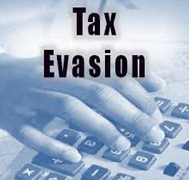Tens of thousands of Canadian taxpayers bought into the GLGI tax shelter and unfortunately for them, this had led to thousands of tax audits, objections and, in many cases, tax court appeals.
After several years of audits, objections and now appeals before the Tax Court, the CRA has recently begun sending out offers of settlement to those GLGI participants who filed notices of objection.
The big question right now is: should you accept the CRA’s current offer of settlement?
What is the CRA’s offer?
- allow a donation tax credit equal to your initial cash outlay
- cancel all interest related to the cash portion of the donation tax credit
- cancel all interest related to the gift portion of the donation from the period of the audit reassessment through to the date of the new reassessment related to your acceptance of the offer
- you waive your right to any further objection or appeal in respect to these reassessments
Let’s review your options and the possible outcomes:
- You accept the offer.
You will be reassessed based on the terms outlined above. Very generally speaking, this will result in a reduction to your tax debt in the 20% to 25% range. The exact reduction will depend on various factors such as the amounts you contributed and how long ago you donated. Your objections will be finalized and any outstanding balance will now have to be paid.
- You do not accept the offer.
The CRA will continue to hold your objection in abeyance pending the outcome of various test cases related to GLGI. If GLGI wins in court, you will benefit from that ruling. If GLGI loses in court, you will be subject to that decision as well. Depending on how “badly” GLGI loses in court, you may be in a much worse position than if you would have accepted the CRA’s current offer (see my analysis on GLGI’s chances in court below).
Will GLGI win their court cases?
No one can say with 100% certainty however in my opinion it is highly unlikely. These are the possible outcomes:
- The court finds the donations should have been allowed and you end up not owing CRA one red cent – crossing your fingers!
- The court finds that part of the previously claimed donation amount (i.e. the cash portion) should have been allowed and while your tax debt is reduced somewhat, the larger, disallowed donation amount along with the additional interest that has accumulated during this lengthy process (retroactively to the tax year when you received a refund associated to the donation) will ensure you can expect a big fat tax bill.
- The court finds in favour of CRA, disallowing the entire donation and you owe the full debt as well as penalties and interest retroactively.
Of course every case is different and tried on its own merits however based upon the rulings in other cases such as Lockie (2010 TCC 142), Berg (2012 TCC 406), Kossow (2012 TCC 325) and Bandi (2013 TCC 230), the Courts have clearly signalled their general agreement with the CRA’s position that the cash portion of the donation is – at best - the only legitimate donation amount.
However, and even more troubling case – Maréchaux (2010 DTC 5174) had the court find that no amount of the original donation was legitimate – even the cash portion! Essentially the court found that the cash portion of the “donation” was simply part of a tax reduction scheme and lacked the required donative intent. If the judge in the upcoming GLGI test cases agrees that they are similar enough to the Maréchaux case, then you will be in the unfortunate position of not even receiving credit for the cash you contributed to this tax shelter.
Given the above, you have to ask yourself which outcome is the most likely for the GLGI test cases? My view is that the best case scenario is that you will be allowed a donation in the amount of your cash outlay. However the court cannot rule that interest relief also be granted, so this outcome would represent less than what you are currently being offered by the CRA.
If you wait until the GLGI cases go to court, there is absolutely no guarantee that the CRA’s current offer of settlement will be made available to you again. On the contrary, it is highly unlikely the CRA will make another offer of settlement if the most likely scenario unfolds and the CRA wins their case in whole or in part. Why would they? Their position would only be enhanced by a court victory making them less likely to negotiate a settlement with you.
Some of these GLGI cases have been outstanding for many years. This will mean that penalties and interest (compounded daily) are staggering and the tax debt will have quickly doubled or even tripled in size. Whether you accept the offer now or wait until the court cases are decided, CRA will proceed to take aggressive enforcement action sooner or later. Remember, CRA is under immense pressure from the government to collect all revenue it can if a budget deficit crisis is to be avoided.
Don’t put all your eggs in one basket, assuming that the outcomes of these court cases are going to go in your favour. Being prepared and having plans in place for all outcomes can greatly reduce financial impacts to you later.
What should you do now?
Call Tax Solutions Canada at 1.888.868.1400 and make an appointment to speak with one of our tax specialists who will guide you through your options. We can assist you with the challenges you will face in deciding whether to accept the offer and how to deal with the CRA regarding that large tax bill you will have to deal with once if you sign the offer.






